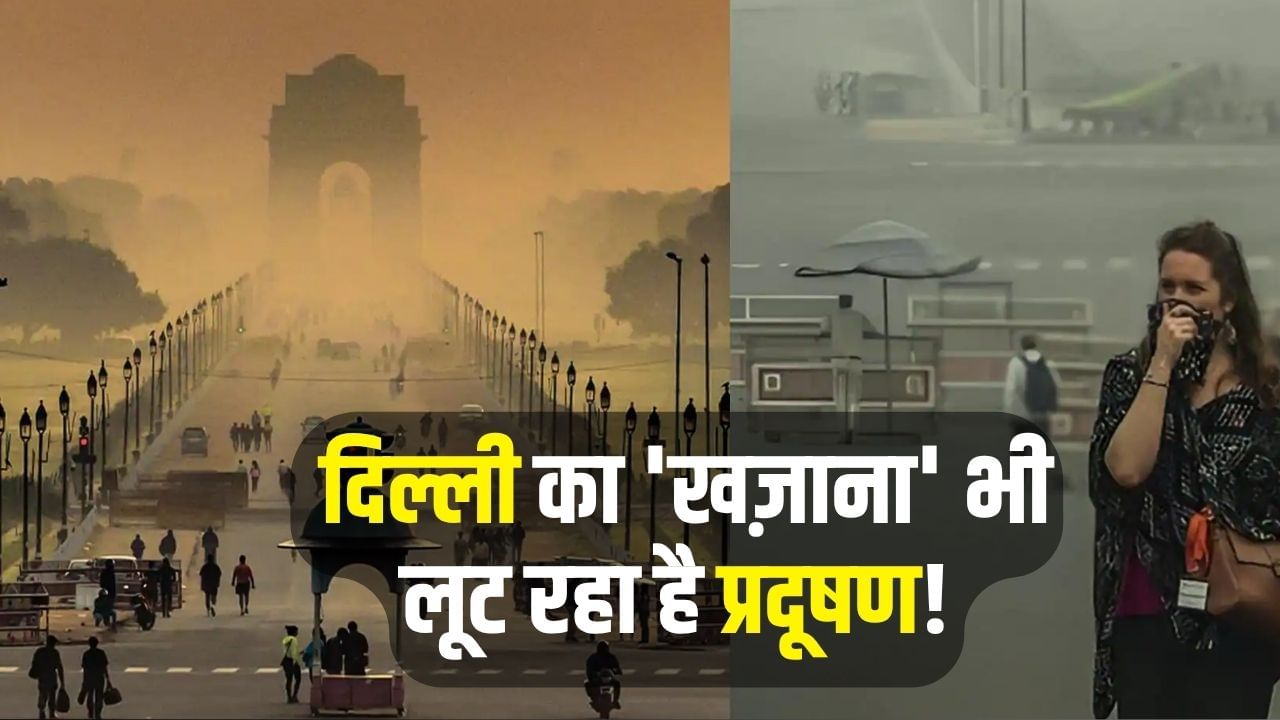Air becomes dangerous in Delhi
Delhi air pollution: Winter has knocked once again, and with it the sky of Delhi-NCR has been wrapped in a blanket of poisonous smog. This is no longer a shocking news, but has become an annual tragedy, which crores of people are forced to live with every year. But this crisis is no longer limited to our lungs only; This is a direct attack on our pockets, our work and our future.
The situation is so serious that a recent survey has raised alarm bells. According to this survey, 4 out of every 10 people living in Delhi (ie 40 percent) want to leave the city to escape this suffocating environment. This is not just a figure, but evidence of the frustration that has permeated the air of the capital. When a city, once considered a center of opportunity, turns into a ‘gas chamber’, it is a sign not only of health but also of a serious economic crisis.
Talent hub’s reputation at stake
it’s probably pollution This is the most frightening and human aspect of this crisis. Delhi, which was known for its talent and opportunities, is today on the verge of losing that reputation. Recently, a survey conducted on 17,000 residents of Delhi has revealed this bitter truth. 40 percent of the people involved clearly said that they would prefer to settle outside Delhi to avoid air pollution and its serious health risks.
This idea of migration is not limited only to the economically affluent class. In a separate study, it was found that about 57 percent of the migrant workers working in Delhi now prefer to live in their hometown rather than Delhi. One of the many reasons for this is the poor air quality here.
This trend is a big warning for the future of Delhi. If talent and labour, the two main pillars that run a city, start turning away from it, then Delhi’s attractiveness as a ‘talent hub’ may be in danger forever.
How is the economy suffocating?
This poisonous air is not only affecting our health but also draining the coffers of Delhi. Delhi, which is the center of political and economic activities of the country, is having to pay a huge price for this pollution. If we look at the figures, Delhi suffered a direct economic loss of $5.6 billion due to air pollution in the year 2019. According to a report, Delhi is losing more than 6% of its gross domestic product (GDP) annually. According to business organization Chamber of Trade and Industry (CTI) Chairman Brijesh Goyal, Delhi’s business is facing a loss of about Rs 100 crore every day due to pollution.
This loss is happening at many levels. When the air is difficult to breathe, people avoid coming out of their homes. Its direct impact is on the consumer economy. Markets become deserted and shopping comes to a halt. According to a World Bank report, the economy is suffering huge losses worth billions due to decrease in customer footfall.
Not only this, winter season is the peak season of tourism in Delhi. But the image of “the world’s most polluted capital” is driving away foreign tourists. The tourism sector is facing losses worth billions due to the huge decline in the number of tourists. According to CTI, where 3 to 4 lakh people from NCR used to come to Delhi every day for shopping, due to pollution their number has reduced to 1 lakh.
Every breath is paying a heavy price
Another lethal effect of pollution, which is visible in statistics but often remains out of discussion, is the attack on our productivity. When employees become ill or are unable to work at full capacity, companies’ profits will be directly affected.
According to a report by DW, the IT sector alone in the country is facing a loss of $ 1.3 billion annually due to loss of productivity due to pollution. At the same time, employers have suffered a loss of $6 billion annually due to reduction in working days.
But all this economic loss pales in comparison to the human tragedy that India faces every year. According to World Bank reports, in the year 2019, 17 lakh people died prematurely due to air pollution in India. This was 18 percent of the total deaths that year. The economy is suffering a huge loss of 45 billion dollars due to these untimely deaths.
Artificial rain worth ₹3.21 crore also ineffective
This problem is decades old, but our solutions are still ‘temporary’ and half-baked. Every year, just before winter, organizations spring into action, meetings are held and some temporary steps are taken.
The biggest example of this is the recent attempt at artificial rain. A total of Rs 3.21 crore was spent on this, which was the budget fixed for five trials. According to an estimate, an average of Rs 64 lakh was spent on each trial. But as a result, there was not enough artificial rain in large parts of Delhi and only light showers occurred in some parts.
This shows that instead of working on the root of the problem, we rely on expensive but ineffective experiments every year. As soon as summer comes, all these promises and efforts go on the back burner. The entire North India, which is the most fertile in terms of agriculture, is also in the dire grip of pollution. Experts say that until a permanent and year-long solution to this problem is found, the air, health and economy of Delhi-NCR will continue to suffocate.
